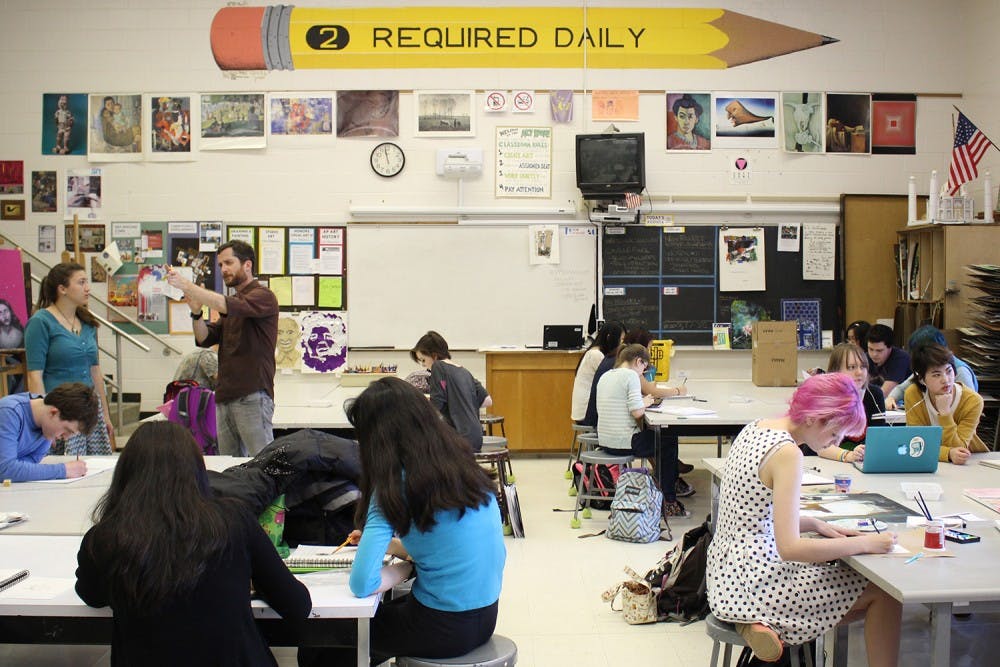“Most college admission places don’t look at the number of APs you took,” he said. “If you took APs, then they’re glad you took a rigorous schedule, but (with) the difference between five APs and 10 APs, they pretty much stop looking.”
Love said another problem facing the arts curriculum is that the AP arts classes, such as AP Art History and AP Music Theory, are grouped within the arts curriculum. All students are required to take at least one arts or career and technical class to graduate, and because of this grouping, many students decide to take AP Art History or AP Music Theory to fulfill that requirement.
Love said students end up taking the AP classes to fulfill the arts requirement, without delving into hands-on skills.
“AP Art History should be put into the history category and not into the arts category (of the curriculum),” Love said. “I think that arts category should actually have to be a performance-based class, whether that’s chorus or band.”
According to the enrollment numbers, during the 2011-12 school year, 14 students were enrolled in the unweighted class of Music Theory, while 41 students were enrolled in the AP equivalent in the three high schools combined. During the 2013-14 school year, no students were enrolled in the unweighted class, while 37 were enrolled in the AP class.
Theresa Grywalski, the school district’s coordinator of visual and performing arts instruction, said arts classes are at a disadvantage.
“Historically, the arts have fought on an unleveled playing field because the (Department) of Public Instruction has put things like honors and APs classes and weighted grades in positions that make them very attractive to grade point average,” she said.
Nora Dicker, an 11th grade student at Chapel Hill High School, said that although she is currently enrolled in her second arts class, Drawing and Painting, she was only drawn to arts classes because of the requirement.
“At my school, I know a lot of people take arts classes, but there is definitely a lot more people taking APs,” Dicker said.
“They feel like if they’re not going to school for art. That’s probably what they think is more important.”
Taking a break
Nabors also said that as a result of the allure of AP classes, many students have been opting for a free study hall period to balance their course load instead of enrolling in an extra arts elective.
To get the day's news and headlines in your inbox each morning, sign up for our email newsletters.
“We do a lot of recruiting within the school and educate kids that study halls aren’t necessary because if what you’re looking for is a break in your day you can get that from vocal music,” he said.
The study hall option is opened to any high school student in the district, and Love thinks this needs to change.
“The district (should) limit the number of people who are allowed to take a study hall,” Love said. “A study hall shouldn’t be available to any student first semester unless they are identified as someone who is academically struggling, or they sign up for four or five APs, and they need that time.”
Love believes that a study hall, or another AP class, is not as beneficial as an arts class because the arts can teach students the power of failure.
“When you don’t balance a chemistry equation correctly in AP Chemistry, you get it marked wrong. I think AP Chemistry would be a different course if when you didn’t balance your chemistry equation correctly, you blew your hand off,” Love said.
“Our curriculum still has the space for children to metaphorically blow their hands off, and learn that we still understand the value of failure as a learning tool. We still have the curricular space to allow it.”
arts@dailytarheel.com




